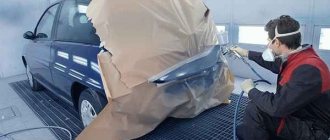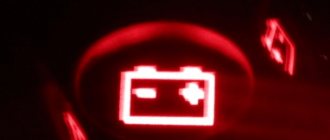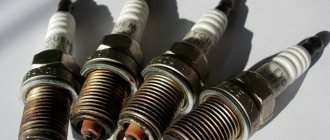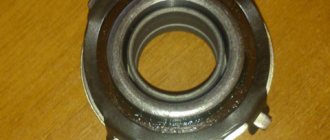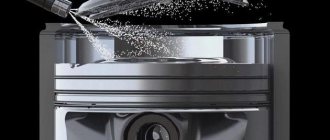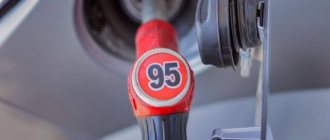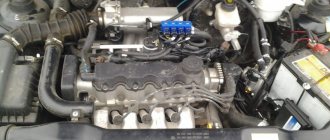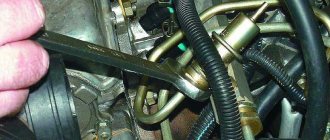Extraneous sounds that occur in a car while driving may appear suddenly. This causes discomfort to the driver and signals that there is a malfunction in the car. There are quite a few reasons for noise and hum, so every owner should understand where the sound is coming from. It is very important to immediately recognize the origin of the sound, since some breakdowns require immediate repair. In addition, if the engine or other critical systems malfunction, it can be dangerous to operate the vehicle. Let's look at what a hum can be like when a car is moving, and what needs to be done to recognize and eliminate it.
Natural causes
Before you start figuring out what causes a hum in your car, you need to learn some basics. It should be understood that there will be noise in the car in any case and some sounds are considered normal. Thus, experts divide extraneous sounds in the car into several “types”: natural, unnatural and all others. If the driver hears strange noises that do not resemble natural ones, then he should carry out diagnostics and find out the reason for their occurrence.
Reasons for “normal” sounds:
During fast driving on the highway, a hum may be heard in the cabin due to the wind. This problem often occurs in cars with a small body. If you reduce the speed limit, the sound will disappear.
During operation, any internal combustion engine makes sounds and this is normal. However, sometimes the “engine” begins to make more and louder noise. This is a good reason to conduct a diagnosis.
Unpleasant sounds may occur while driving on a bad road. The coarse asphalt surface is to blame.
And the most obvious natural reason for the appearance of a hum is driving at high speed with the windows wide open.
The listed reasons are the “norm” and there is no need to look for faults in the car. There are a number of “noises” that can also be called safe. For example, the creaking of plastic parts in the interior is present in many car models. Using silicone lubricant will help solve the problem.
Some drivers attach a special additional rack to the roof. He is the one who can make loud sounds. This starts after the car accelerates to 60 km/h. Drivers note that only the iron lattice trunk makes noise, and not the streamlined plastic one.
And last but not least, it’s worth noting the accessories. Moldings on the hood and windshields on the doors - these elements, when poorly secured, make noise while the car is driving.
What and where whistles
One of the most common causes of whistling is a loose alternator belt. If this happens when the car has just been started or in damp weather with high air humidity, then, in general, there is nothing really dangerous. There is no reason to worry, especially if there is a high load on the generator, that is, electricity consumers are turned on.
If the squealing continues while driving, you should be wary. The belt may make an unpleasant sound due to normal wear and tear. Grains of sand or small debris caught between the pulleys and the belt can also cause noise.
What elements can make extraneous sounds?
Many drivers are concerned about having excellent sound insulation in their car. But if, even with low audibility, loud sounds occur while driving, then this is a reason to think about it. Having figured out what the hum in the car is when driving and the reasons for its natural occurrence, the driver should delve into the study of the issue of abnormal “sound symptoms”.
Wheel bearing
A wheel bearing tends to make extraneous noise when it malfunctions. Sounds arise from one side near the wheels. The noise intensifies when accelerating and is simultaneously accompanied by vibrations. Vibrations may increase when turning. Once the driver understands which side and near which wheel the sound is coming from, he just needs to touch the hub and make sure it is hot to the touch.
If you have doubts that the problem is in the hub, you can carry out independent diagnostics. The car is lifted and inspected. After this, rotate the wheel and listen to the sounds. A broken bearing will cause a sound from the hub, and there will also be a characteristic play. If the problem is confirmed, you will need to change the wheel bearing or replace the dried grease.
Wheel bearing noise is a problem that is more common than other types of problems. Noises sometimes appear even when driving in a straight line, as well as when driving over uneven surfaces. At high speeds, the hum begins to resemble the sounds of an airplane, and the higher the speed, the louder the noise becomes.
It is difficult to diagnose bearing failure if the driver owns an all-wheel drive car. The verification procedure is similar to the method described above, but you will additionally need a stethoscope to operate.
Engine
The powertrain is noisy by default, but sometimes the sound can indicate a serious problem. The driver should feel “something is wrong” when the engine produces a hum at any speed and speed. This may be due to a defect in the engine mounting pads. Another reason may be a low oil level in the engine. These are non-critical problems that can be fixed in one day. But you should not ignore the symptoms in any case.
Transmission
The gearbox may cause extraneous noise. But they arise for different kinds of reasons, and the nature of the sounds depends on them. The hum can be intermittent or, conversely, continuous. You can diagnose problems without having special skills. That is, every driver will be able to understand why the extraneous noise appeared without turning to auto repairmen.
Firstly, the gearbox may become noisy due to insufficient lubrication. Secondly, the problem appears if the oil is not changed in a timely manner. Having done this, the car owner will notice that the hum has stopped. If there is a problem with the launch pad, the noise stops occurring after turning on neutral.
Thirdly, the car owner may notice the appearance of a hum from the CV joints when driving over potholes and bumps. But strange sounds do not always indicate CV joints; it happens that bearing noise appears, and the driver cannot determine this problem without resorting to specialists.
Engine compartment
Not only gearbox hum can be caused for several reasons. The engine compartment also produces a hum, which often intensifies with the speed of the power unit. Most often the problem lies in the loosening of the belts or one of them. In this situation, you need to inspect the degree of tension by tightening the strap. It is worth making sure that it does not sag. Sometimes after tightening the straps the hum remains. Then you will have to replace the belt with a new one.
If everything is in order with the belts, then you need to inspect whether the bearing of the pump or generator is broken. These elements can also produce strange sounds. Due to a broken pump bearing, the temperature of the motor increases. If you ignore the problem, the sound turns into a loud knock. As for a broken generator bearing, it reduces the battery charge level. Modern cars notify you of this through a warning light.
When braking
Having found out the reasons why the hum appeared in the car at speed, the driver can only understand why the sound occurs during braking. This situation happens no less often, although many car owners hope that the sound will “go away on its own.”
We list the reasons that are most common today:
The problem is hidden in the brake pads. In such situations, the hum can be heard even at low speed. Pads tend to wear out. At the moment when the thickness becomes too thin, the bracket touches the disk and makes a sound. Instead of an annoying sound, the driver sometimes hears a whistle after pressing the pedal.
Grooves on the brake disc. When so-called ditches appear, the driver hears the sound of metal when braking. They occur upon contact with abrasive particles that have penetrated under the pad.
Overheating of discs or pads. If the driver brakes at high speed, he may hear a hum while stopping. Overheating of system elements is to blame. This problem affects those who drive the car carelessly and accelerate sharply.
Another simple reason for the appearance of a hum is a loose handbrake. If the part begins to dangle and does not offer resistance, then measures need to be taken to eliminate the problem. This is what causes a slight hum from the rear when the car is stopped.
Tires
Sometimes the cause of a strange hum is the tires. Why is this happening? The poor quality of Russian roads makes itself felt. Crushed stone and bitumen make noise when in contact with rubber. Additionally, traction may be reduced due to tire pressure. Increasing the area leads to increased noise. Last but not least, air temperature has an impact on tires. In summer, the rubber softens, which means that resistance to asphalt increases. This is where the noise comes from.
Engine support cushions
Even modern engines are subject to strong vibrations when the vehicle moves. How does this manifest itself? The loads from vibrations are taken by the engine mounts, which are made of hard rubber. Thanks to these parts, vibrations are dampened, and the driver in the car practically does not feel them. The cushions also absorb loads associated with impacts on the vehicle's chassis. Such influences do not have a significant effect on the engine. However, cushions can deteriorate over time. One of the characteristic signs of this phenomenon is a whistle while the car is moving. It can also occur if at least one of the cushions is not properly tightened.
How are pillows changed?
Replacing a pillow is a complex procedure. To do this, the engine is completely removed and hung on a winch. Then the pillow is unscrewed, inspected and, if necessary, replaced with a new one. After this, the motor is put in place. At the same time, it must be set very precisely, down to millimeters. If the installation of the power unit is not carried out very accurately, then vibrations will occur in the engine when turning or driving on a bad road. This makes it clear that it is almost impossible to replace the pillow yourself. This should only be done by professionals.
Let's sum it up
Experts note that the hum in the car when driving at speed, as well as when braking, is caused by a number of reasons. The engine compartment, powertrain, brake system and even tires can become sources of hum. Experienced drivers will be able to independently diagnose and detect the problem. But sometimes this becomes impossible, and you have to resort to the help of specialists. In any case, you should not delay repairs, since overall safety depends on it.
| Tweet |
Tires on a car
The reasons for this may be:
- Tires are out of season. When in the summer you drive on winter tires, with “toothy tread” and even with studs.
- Poor balancing. When braking, you feel not only an increased rumble, but also a beating. There is only one way out - a tire workshop.
- Incorrect installation. Most tires sold today are directional: an arrow on the cord will tell you how to install them. But there are masters who do not attach any importance to this.
Using winter tires in summer
If the car hums , winter tires may be the cause. Extraneous sound is especially noticeable when used in the summer. Winter tires are made from a soft base, designed for low temperatures. When driving in warm weather, such tires sometimes make noise. By installing tires according to the season, the driver will get rid of it.
Improper wheel balancing
If there is a hum at speeds of 60 or more and vibration of the body, then maintenance must be performed. It may be due to improper wheel balancing. Clear signs of this are increased fuel consumption and loud noise. If an error was made during balancing, the wheel will move to the side and maneuverability will be impaired.
Incorrect tire installation
If simple tires can be installed almost without looking, then with complex tires there is more hassle. Tires that have a directional tread pattern are installed observing the direction of the pattern. Incorrect installation is detected by noise when driving.
Electrics: the hum can even come from it
More precisely from the generator. Both the belt tension and the condition of the bearing come under close attention.
You can see for yourself that there are 1000 and 1 reasons for the occurrence of an extraneous hum. Therefore, if you don’t want to look for a fault yourself, watch videos on YouTube for hours, walk around with your hands smeared with dirt and oil, come to us. Here, the technicians will not only determine the malfunction, which component is worn out/broken, but will also advise on repairs: what spare parts are needed, how long it will take, how much the repair will cost.
Moisture
One of the simple reasons for whistling may be moisture that has gotten on the belt. However, it is necessary to establish where moisture could have gotten onto the belt.
Moisture may appear due to a deformed expansion tank with coolant, or oil drops from the engine may get onto the rubber product.
If in the first case it will be easier to replace the tank, then in the second case you need to check the oil seal or the cylinder head gasket.
However, if the characteristic noise occurs in rainy times, when driving through large puddles, then this means that water has got on the belt. After some time, the whistling will stop, which means there is no need to worry.
Cold weather and stress
In frosty weather, when starting the engine, car owners turn on several power consumers, the heating system, dimensions, and wipers. This leads to stress, the belt rotates, a whistle appears and as a result the belt wears out faster.
Why even new pads squeak when braking smoothly?
The whole difficulty is that the reason can only be found by brute force. If a defect appears immediately after replacing the friction linings, you have to think only about the fact that they have not gotten used, about problems with their quality, or about the absence of anti-squeak plates on the back of the part. If no one serviced the brake system the day before, inspect all components:
- Pads. Some models are equipped with “squeaks” - special metal brackets attached to the side of the product. When the friction part wears critically, the metal comes into contact with the disc, and we get a squeaking sound.
- Brake discs. They wear out and often unevenly. Allowable end runout is no more than 0.020 mm.
- Caliper. Wedging of the working cylinders and the entire structure on the guides is not allowed. Torn anthers must be replaced, fingers must be lubricated with a special compound that is resistant to high temperatures.
There is no need to carry out an inspection if the disk has been exposed to water, sand or has become corroded. You can do nothing, as in the case of the alternator belt whistling in the cold after driving through a puddle, or perform a series of long, smooth braking. This will help dry the part or remove dirt from it. For example, repeat the cycle three times: acceleration to 80 km/h and smooth deceleration to 20 km/h. If the pads squeak when braking after a recent wash, get ready to find a turner or go to the store. Cold water falling on a hot disk leads to improper hardening. As a result, it wears unevenly and runs out.
What else can wear out?
If the belt whistling is not to blame, you should take a closer look at the pulleys. They can also cause the belt to slip and cause an unpleasant sound. A visual inspection can reveal significant wear, due to which the belt does not fit tightly enough to the pulleys - it slips and whistles.
Another cause of squealing may be liquid that gets on the belt. In this case, it is important to find out what kind of liquid it is and where it came from. If it's antifreeze, check the expansion tank. Oil on the belt is a reason to inspect engine gaskets and all kinds of seals.
If the whistle appears unexpectedly in rainy weather after driving through a large puddle, the cause may be simple water from it. Most often this whistling stops quickly.
A severely worn alternator bearing or tension roller can cause noise.
When unpleasant sounds appear from your car, it is important to identify their cause as soon as possible. Sometimes “wrong” sounds from your car can help you identify a serious problem and save you from costly repairs.
Is repair possible?
It will only have to be repaired at a service station. Even with experience, it is difficult to understand modern gearbox and clutch systems. Therefore, it is better not to waste time, but to entrust such work to specialists. Most often it is not necessary to repair, but to change the clutch. However, for foreign cars such a solution can cost a lot of money. For example, a whistle when driving a Chevrolet Cruze car could be eliminated by replacing the entire clutch system. This is what they write on some auto forums. However, this does not mean at all that this problem is common in these machines.
Sources
- https://autostuk.ru/gul-v-mashine-pri-dvizhenii-prichiny.html
- https://quto.ru/journal/articles/6-prichin-svista-iz-avtomobilya-i-sposoby-ego-ustraneniya.htm
- https://topcraft.by/gul-pri-dvizhenii-avtomobilya-razbiraemsya-v-prichinax/
- https://tuningkod.ru/obsluzhivanie-avto/neispravnosti/problemy-s-upravleniem/gul-pri-dvizhenii-avtomobilya.html
- https://abakan7m.ru/drugoe/svist-pri-dvizhenii-avtomobilya.html
- https://lanister.ru/avto-sovety/pochemu-svistit-mashina-pri-dvizhenii.html
- https://ProAvtoMaster.com/ekspluatatsiya/21-prichina-vozniknoveniya-gula-v-mashine-pri-dvizhenii
- https://1gai.ru/baza-znaniy/sovety/522712-5-shumov-kotorye-mozhet-izdavat-vasha-mashina-chto-kazhdyj-iz-nih-oznachaet.html
- https://FB.ru/article/340468/poyavilsya-svist-pri-dvijenii-avtomobilya-vozmojnyie-prichinyi-diagnostika-i-reshenie-problemyi
- https://avto-problemy.ru/pochemu-mashina-svistit/
